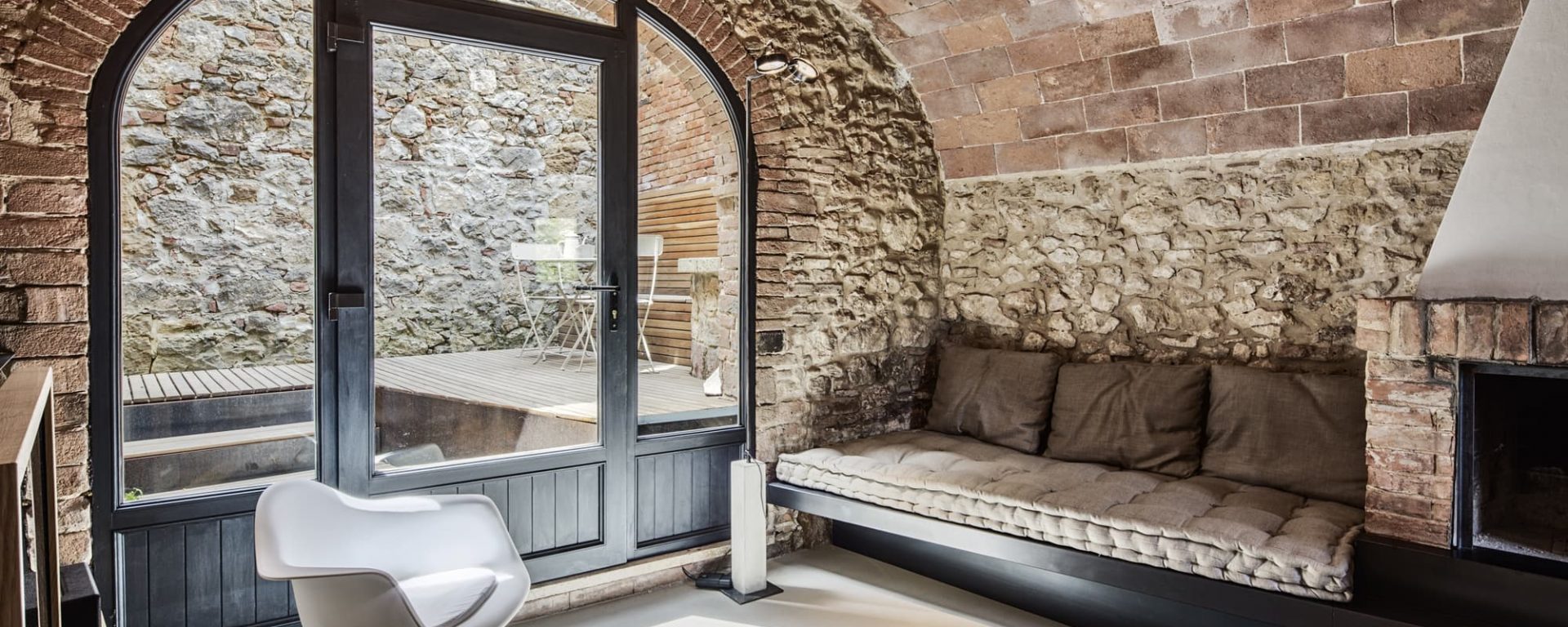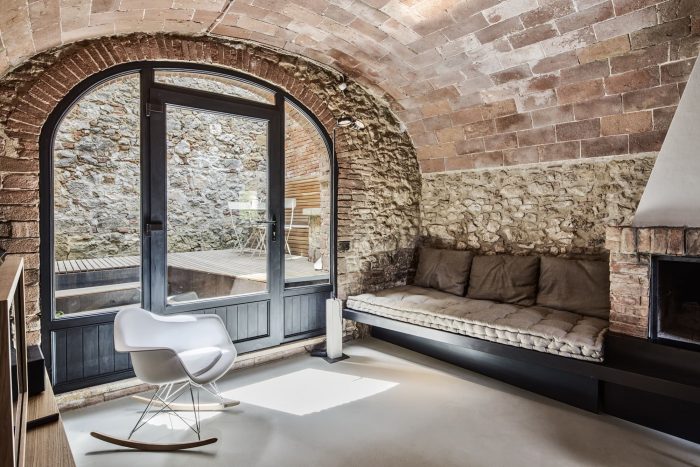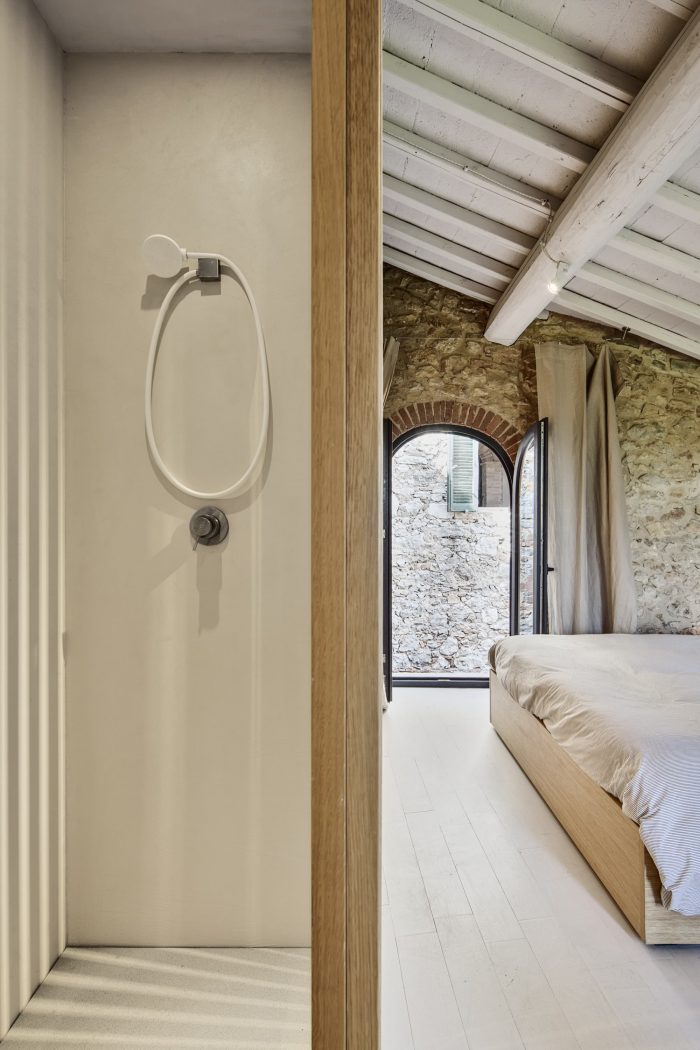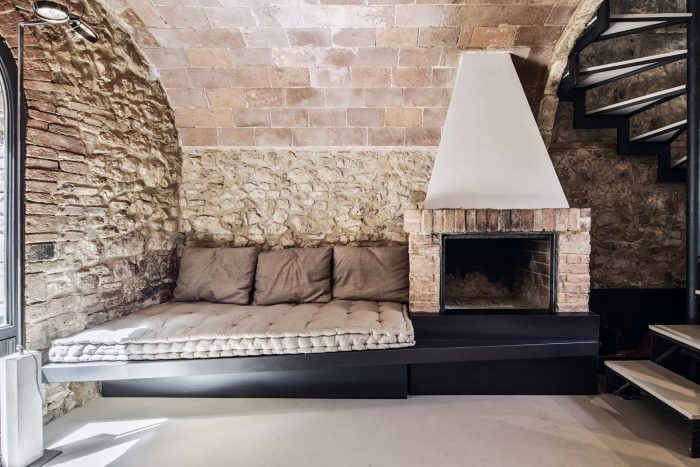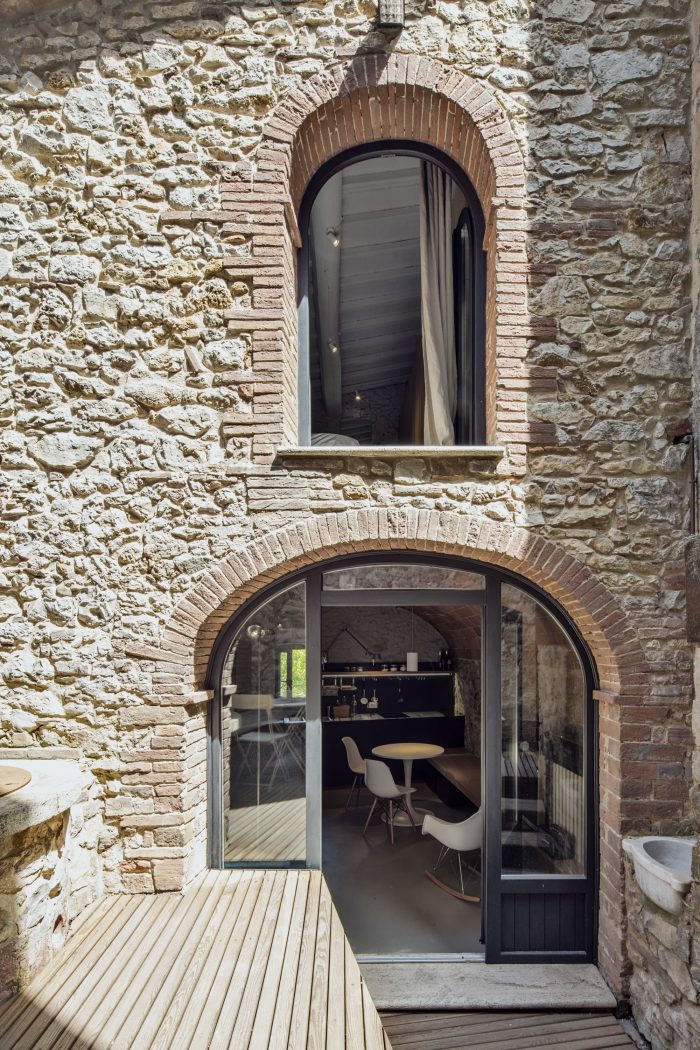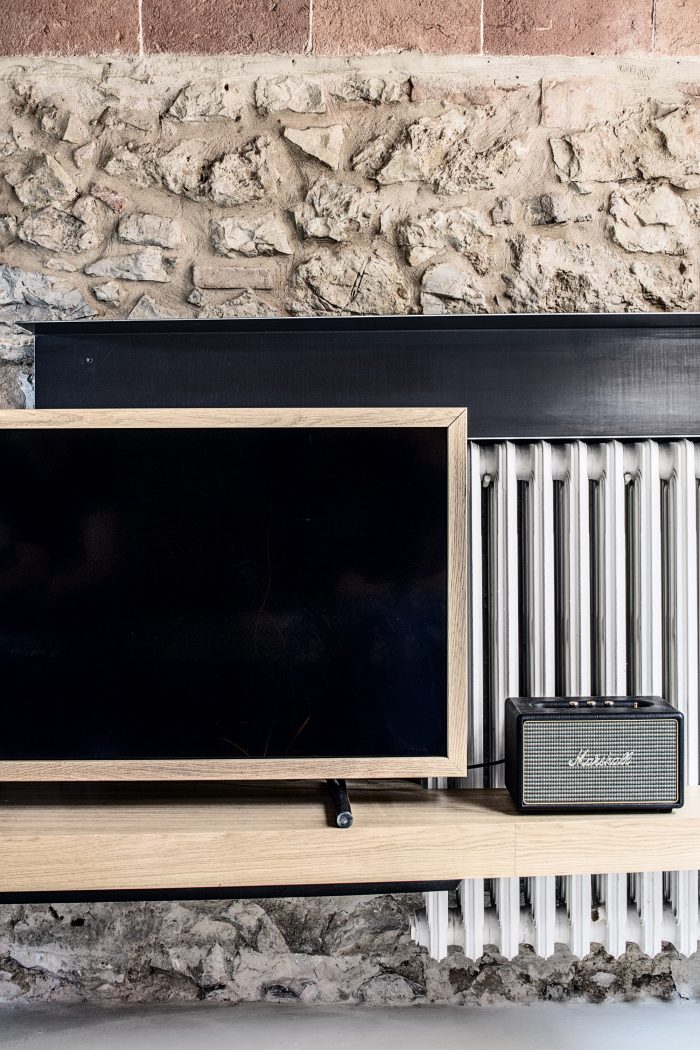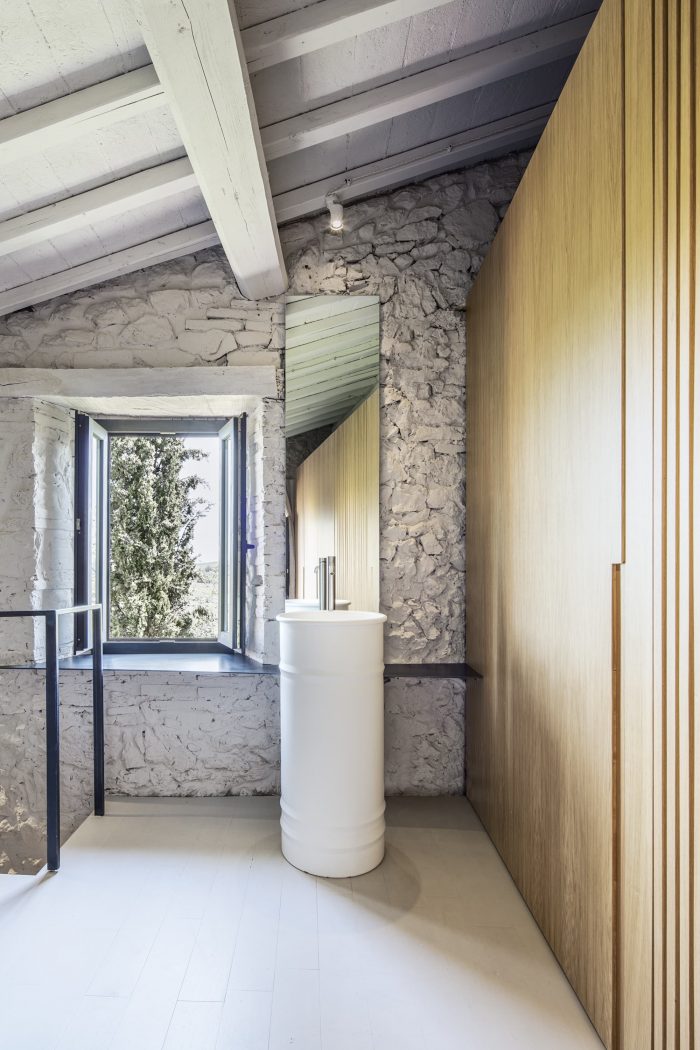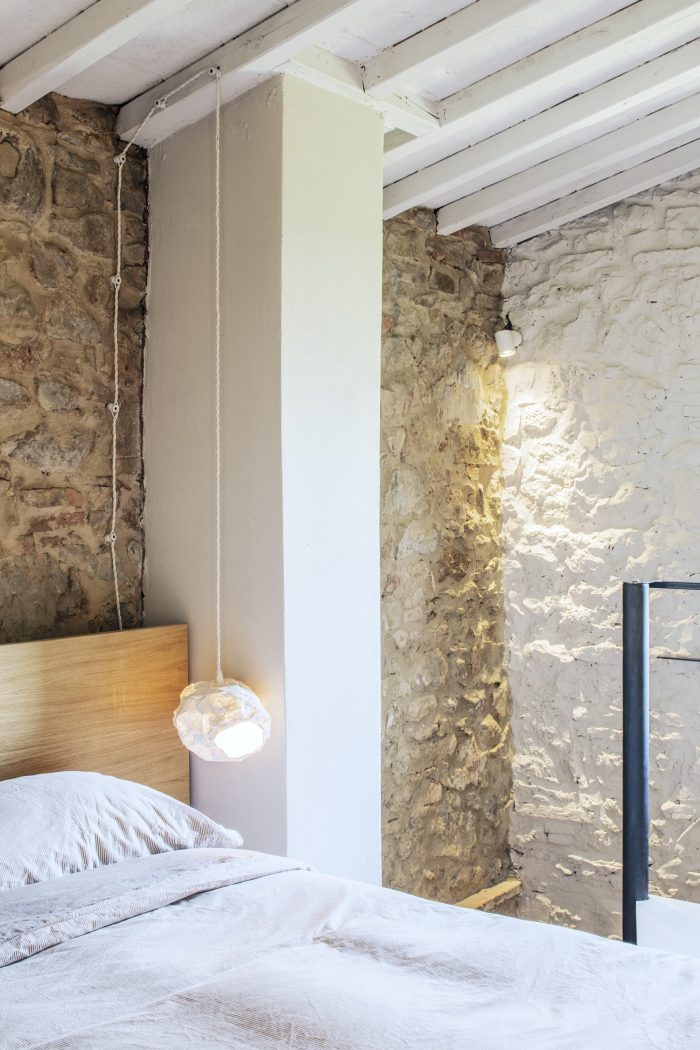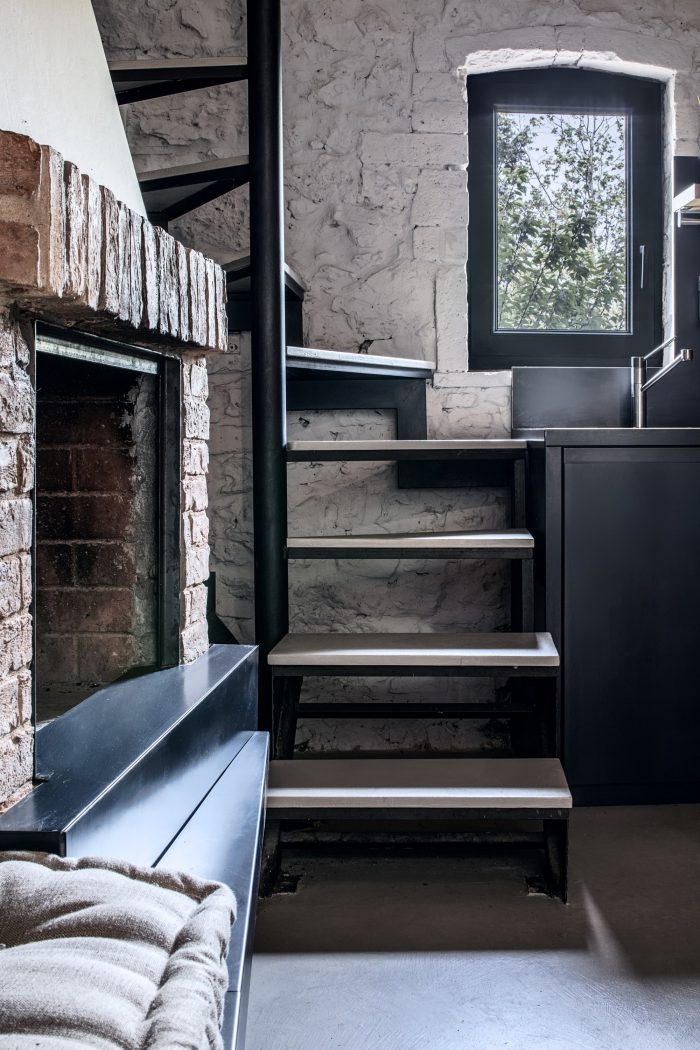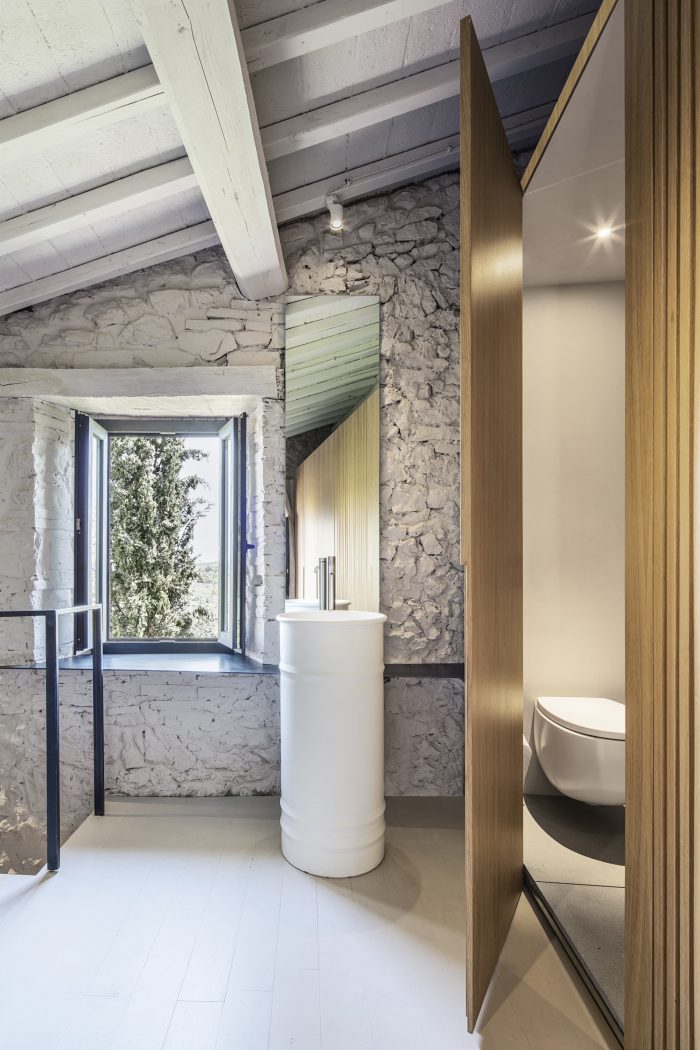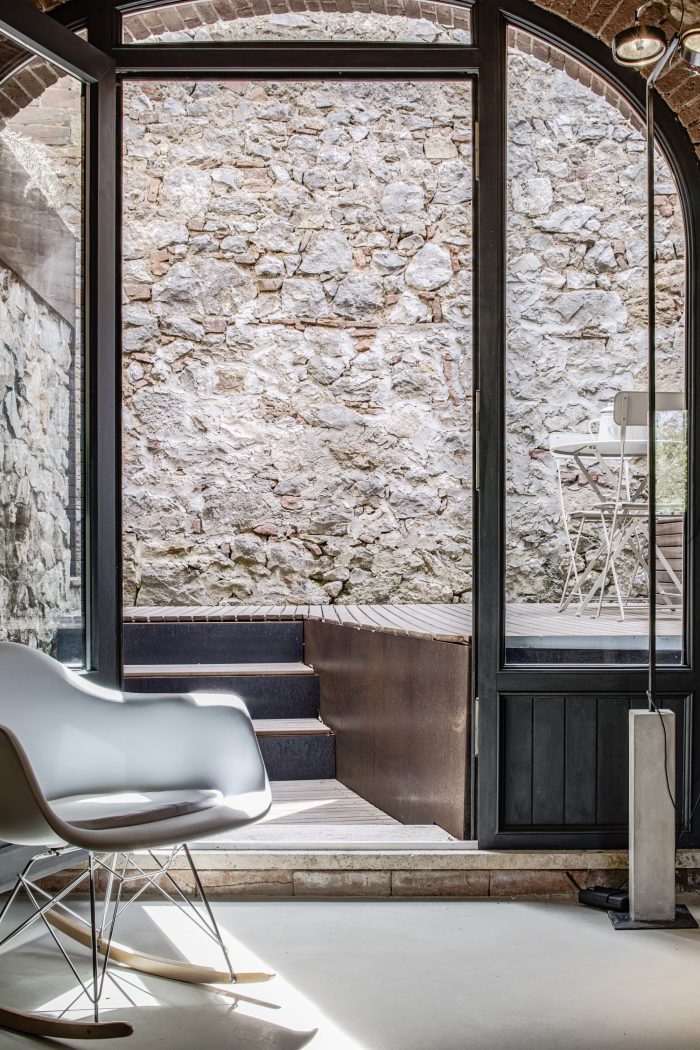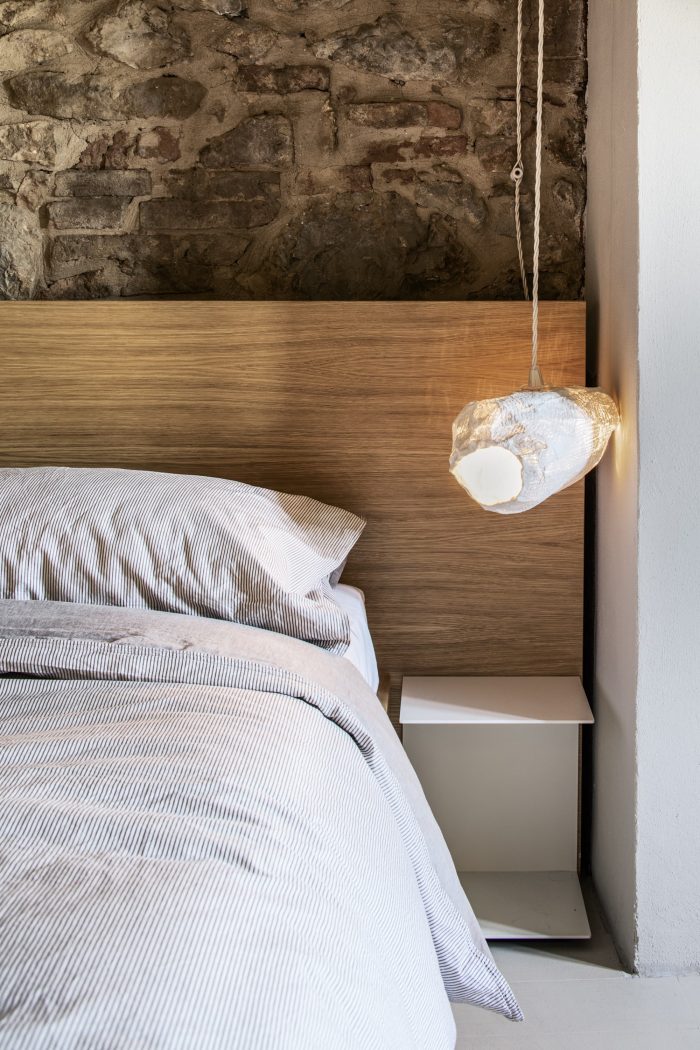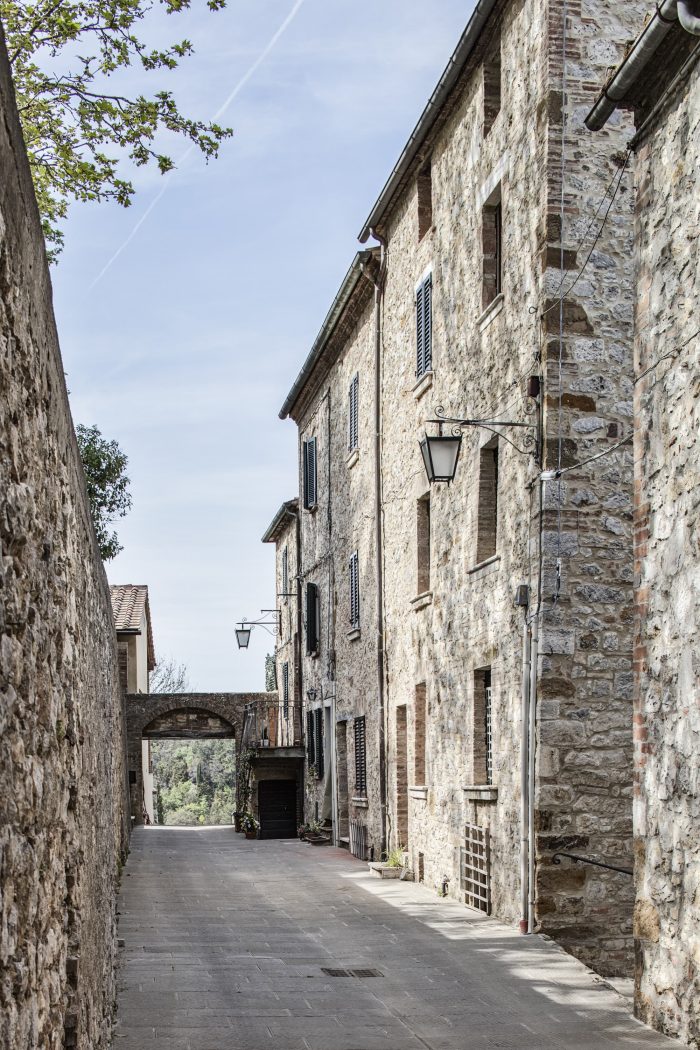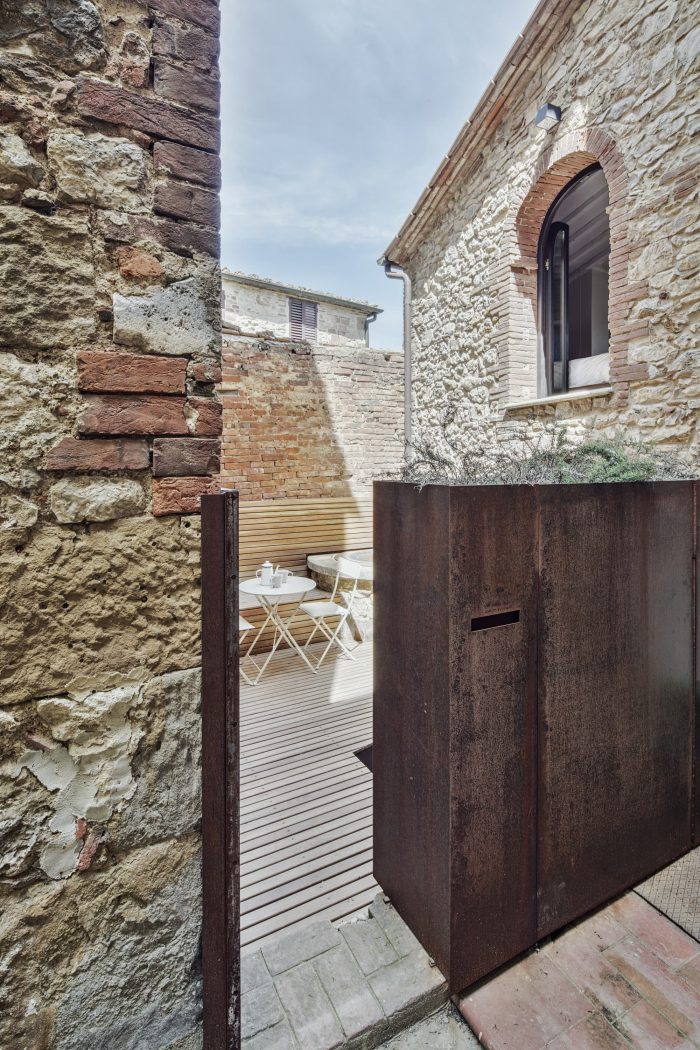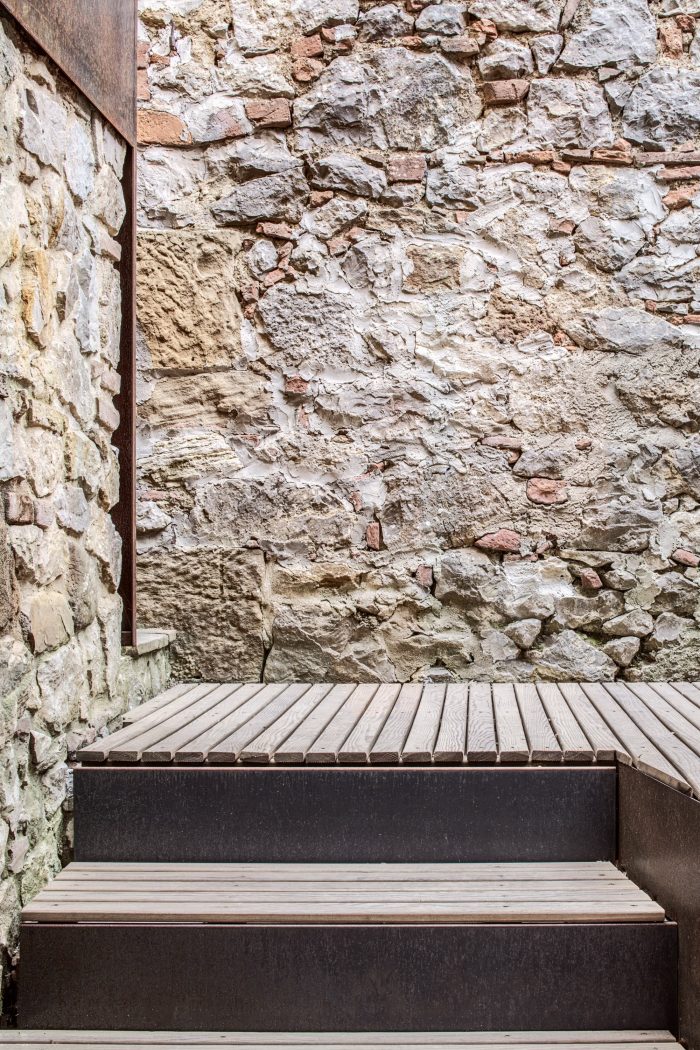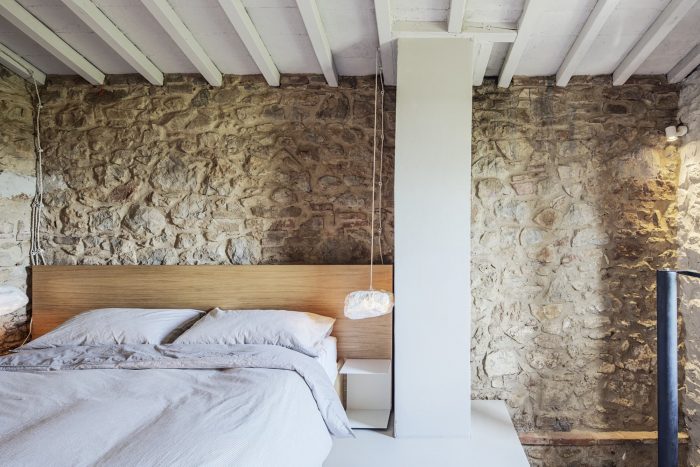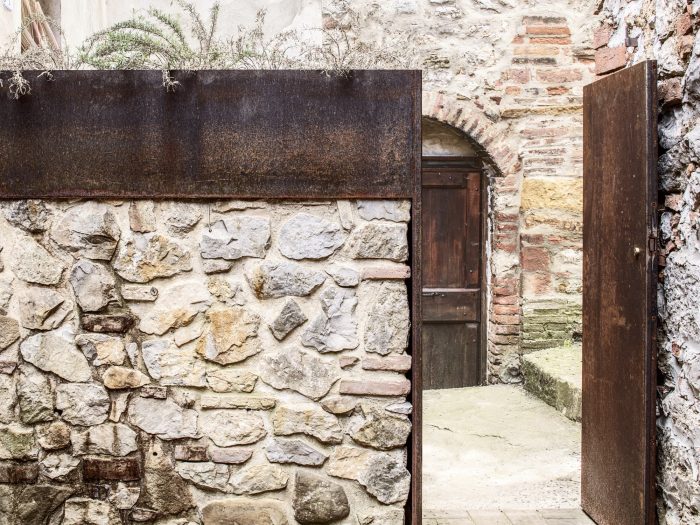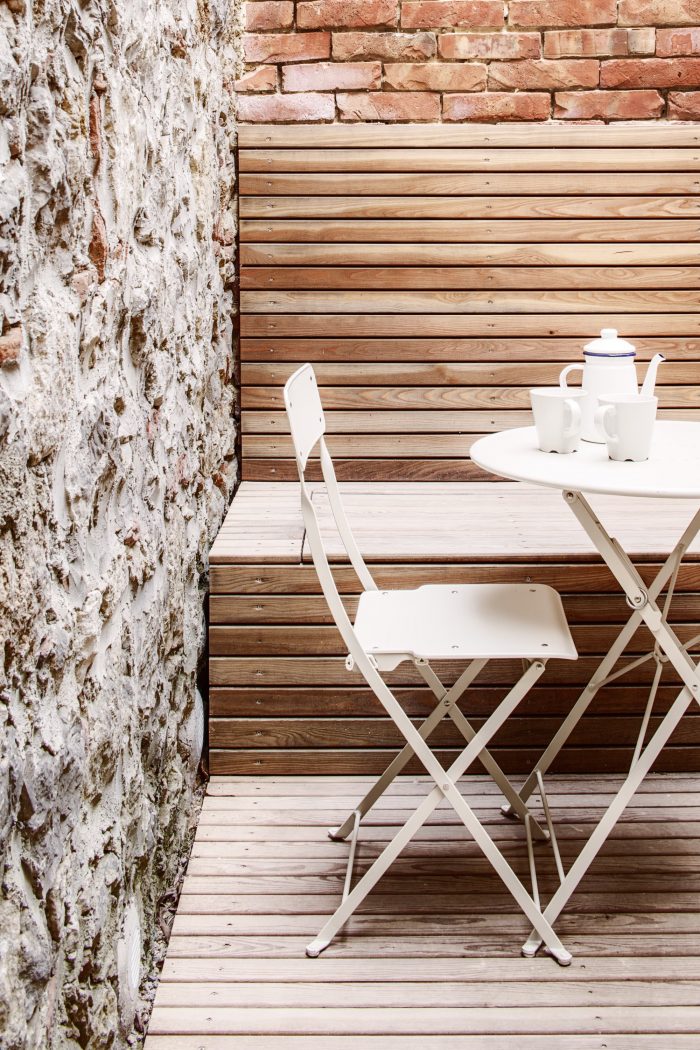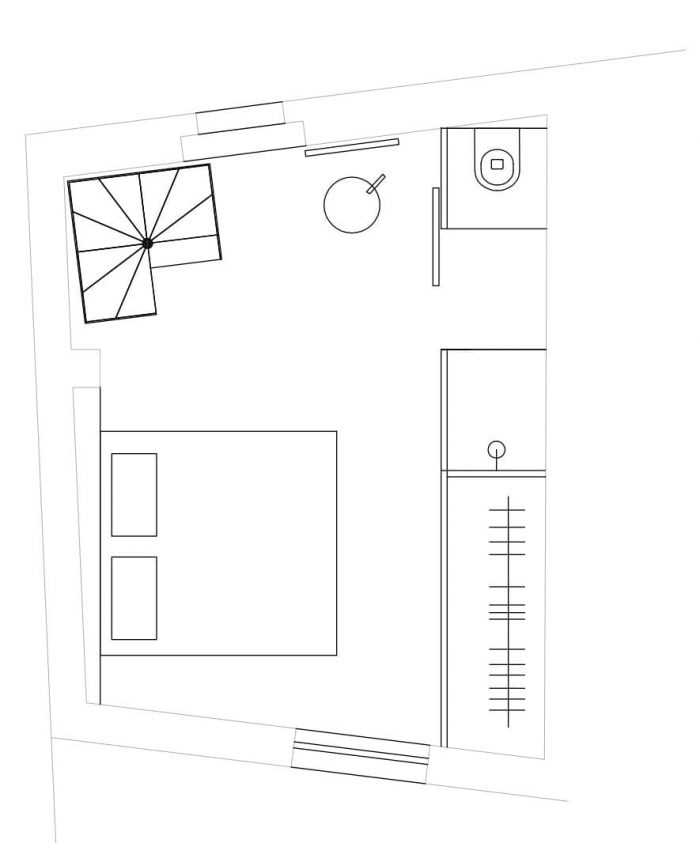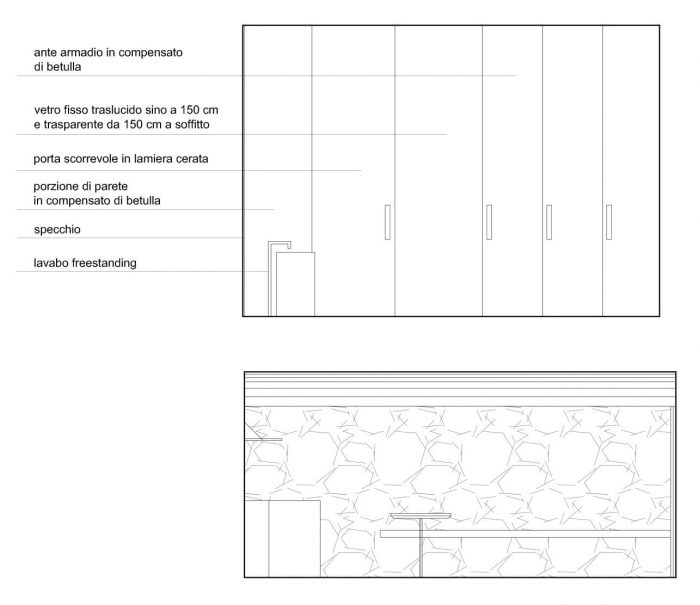修复干预涉及一个小建筑,位于Trequanda综合城市结构的边界,这是托斯卡纳丘陵地区的一个小村庄,所谓的 “creste senesi”。该项目包括一系列小而精确的干预措施,重新定义了建筑的细节方面。
The restoring intervention involves a little building, located at the border of the consolidated urban fabric of Trequanda, a small village in a hilly Tuscan area, the so-called “creste senesi”. The project includes a series of little and precise interventions, which redefine detailed aspects of the building.
内部庭院位于与入口边界门槛不同的高度,分别位于街道边缘和房屋的入口处。这个地形位置成为重新设计土壤和开放空间的机会。在一楼,纵向墙体的不完美的方正性被两个横向的坐席所规范化,它们能够用它们的延伸来吸收空间的不连续性。
The internal courtyard was located at a different height from the entrance border threshold, respectively located on the street margin and at the entrance of the house. This topographic location became an opportunity to redesign the soil and the open space. At the ground floor, the imperfect squareness of the longitudinal walls is regularized by two lateral sittings, which are able to absorb the spatial discontinuity with their extension.
在一楼,衣柜有这样的任务,既免除了容纳的功能,又转变为厕所和淋浴的空间,由于墙体的稀薄,与卧室的视觉关系很轻。水槽成为房间里的一个孤立的元素,它的使用允许与周围的景观建立视觉关系。
At the first floor, the wardrobe has this task, both absolving a containing function and transforming into a space for WC and shower, in a light visual relationship with the bedroom thanks to the rarefaction of the wall. The sink becomes an isolated element in the room and its use allows the visual relationship with the surrounding landscape.
Architects: Archiplanstudio
Area : 35 m²
Year : 2018
Photographs :Davide Galli
Manufacturers : Knoll International, Agape, Ceadesign, Vitra
Lead Architects : Diego Cisi, Stefano Gorni Silvestrini
Other Participants : Jacopo Rettondini, Christian Tezza
City : Trequanda
Country : Italy

